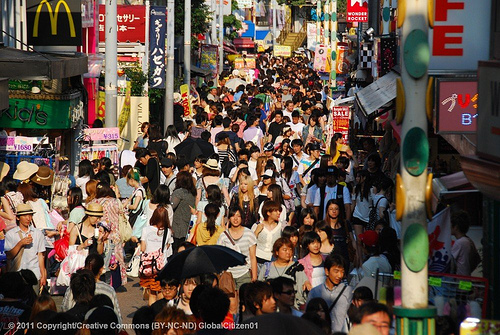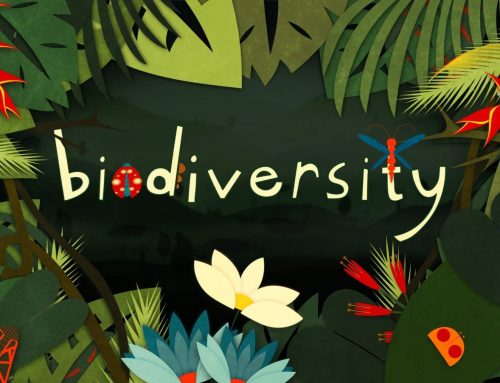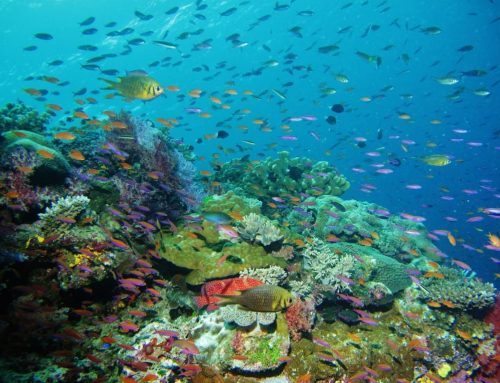We don’t talk much about overpopulation at Postconsumers because, frankly, we’re more concerned with how the people who do populate the planet choose to live and find their own individual level of satisfaction (paired with responsible choices). But the rate at which the world population is compounding is staggering, and it has some major implications for one of our favorite topics, the sustainability of the planet. Today, take a look around you and then think about these ten facts regarding population growth.
Fact One: A Dozen Years, A Billion People
A dozen years is how long it took the world population to increase by one billion people. Between 1999 and 2011, global population increased by a billion people. Most of this population increase took place in developing nations where resources are even more limited.
Fact Two: 1985 Wasn’t Just a Big Year for Shoulder Pads
It somehow seems appropriate that the opulent eighties would mark a pivotal point in the relationship between overconsumption and overpopulation. According to mec.ca, that was the year that the world’s demand for resources first exceeded its supply.
Fact Three: Population Growth Isn’t Just About Babies
Overpopulation is also driven by the ever-increasing life expectancy. Currently in the U.S., according to the World Health Organization, the average life expectancy is 79 years old for women and 74 years old for men. As recently as 1950, those life expectancy numbers were 71 years old for women and 66 years old for men. And if you go all the way back to 1900, the numbers were 48 years old for women and 46 years old for men. While it may seem irrelevant to compare the current day to over 100 years ago, in reality an increase of almost 35 years per person is a rapid and significant switch for the planet.
Fact Four: Teacher May be the Job of the Future!
Well, but only if we pay them, but that’s another topic! In the world this year, there will be just over 125 million births. If fertility remains the same, that means that by the time those babies are old enough to go to school, there will have been another 625 million births.
Fact Five: Something Is Decreasing Its Lifespan, But It’s Not Humans
Every twenty minutes, the human population grows by over 3000. That’s the same amount of time that it takes for another plant or animal species to become entirely extinct (the rate of species extinction is roughly 27,000 per year).
Fact Six: Yet Somehow Overconsumption Even Outpaces Overpopulation
The population of the United States tripled during the 20th century. That’s a lot (however we shouldn’t close the lifeboat when we’re the biggest pirate ship). But even more than the population increase was the consumption increase. Consumption of raw materials in the same time increased by seventeen times, yet American society is presently much more concerned about population growth than the consumerism growth it worships. Postconsumers.com is here to help change that.
Fact Seven: Limits Wouldn’t Even Immediately Help
Take out how you may or may not feel about the infringement of individual rights and consider this for a moment. Even if a benign ruler of the world imposed a limit of 2.1 children per family right now, population would continue to increase for a full generation before stabilizing. That’s because the current generation of children would grow up to have children while their parents (and in some cases grandparents) were still alive. Of course, increasing women’s rights and women’s education around the world has been shown to be the most effective and fair route to lowering the birth rate.
Fact Eight: If You Like Individual Freedoms, You Don’t Like Overpopulation
Population growth isn’t going to just put a strain on resources, it will put a strain on freedoms. The freedom to travel, the freedom to visit areas rich in natural resources, the freedom to choose what food you eat and the freedom to be effectively represented by government are just a few examples, according to ecofuture.org.
Fact Nine: There Is an Ideal Population Number
When you calculate out the anticipated resources that will be available in A.D. 2100, the optimal world population would be about two billion people. That would give people a standard of living of about half of what Americans experienced in the 1990s. The actual anticipated world population by A.D. 2100 is over 11 billion, according to the U.N.
Fact Ten: Reconsider that Second Planet
Before you say that we need to get into outer space and colonize, consider realistic thoughts from many experts in the field.
Did we miss a fact about population growth that you really, really feel that we should have shared? Tell us about it on the social media channels below.
Facebook | Twitter | Instagram | Tumblr | Pinterest | Google+
Photo Credit: Austronesian Expeditions via Flickr





